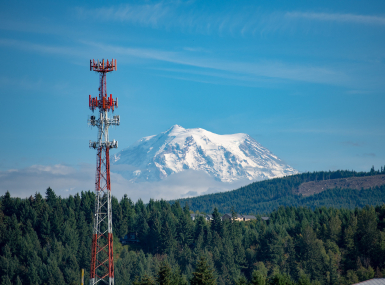Counties look at drones ahead of FAA regulations
Unmanned aircraft systems, or drones, present opportunities and for county use and but may need regulation
As hundreds of thousands of individuals and businesses purchase unmanned aircraft systems (UAS), counties are moving fast to determine where exactly the sky will become the limit.
Commercially available drones, in the parlance of the times, are distinctly different in both size and function from the unmanned military aircraft used in the Middle East, but regulations and policies are forming so hundreds of thousands of new, inexperienced users don’t create just as much of a hazard.
The Federal Aviation Administration (FAA) is expected to release regulations on UAS by the summer that are expected to preempt local ordinances, but in the meantime, counties have taken the lead in building rules around their use.
By the end of March, the Boulder County, Colo. Parks and Open Space Department hopes to present rules to its Board of Commissioners regulating commercial use of drones on county-owned land. County administration pointed to drone proliferation as an issue to watch and support last year and the county’s focus accelerated following inquiries from the agricultural community, interested in using drones for precision farming. Commercial drone use requires FAA approval.
“There are cameras that can determine the health of plants in a way you can’t see with the naked eye, and from a higher viewpoint,” said Jeff Moline, the parks and open space department’s resource planning manager. “That visual surveillance and the GPS coordinates that go along with it can identify exactly where there’s some kind of deficiency, so it can be treated there and not over the entire field,” decreasing the environmental impact from farming and cutting costs for farmers.
The county’s public hearing process has been crucial, Moline said, in addressing misgivings from residents about the new addition to their skies.
“(UASs) can really engender some strong feelings on either side,” he said. “People in the West have an expectation of solitude, many like it because of the big, open spaces, and they can feel like a UAS is an infringement, not so much of their privacy, but an erosion of that solitude. That’s why openness has been so important to the process.”
The related privacy concern drove the Suffolk County, N.Y. Legislature to bar drone flights over county beaches during the spring and summer, though County Executive Steve Bellone later vetoed the bill, responding that there is no right to privacy in public. The Legislature compromised by charging the parks, recreation and conservation department with establishing a permitting system for all drones.
It’s a bird, it’s a plane, it’s a UAS
The sound of a helicopter is music to the ears of someone lost in the wilderness, but in Clay County, Minn., among others, that noise will be a little softer.
When a regional EMS association acquired three drones and asked Clay County to house one, the search and rescue opportunities jumped out at Emergency Management Director Bryan Green.
“We can get helicopters for search and rescue, but we have to get them from a hospital or the Coast Guard,” he said. “It could take hours to get them and it’s very expensive. We can use these a lot faster and cheaper.”
The FAA treats public-use drones the same as aircraft, so drone operators must have a pilot’s license, but no current Clay County deputies have one, so two members of the volunteer search and rescue team will fill that role.
Drones can also deliver medicine and medical supplies, first test of that use coming in Wise County, Va. in July 2015, in the Appalachian Mountains.
But drones aren’t a fix-all. In fact, they can present practical problems.
A close call nearly took down a Fresno County Sheriff’s Office helicopter in early February.
“We had an experienced pilot, but this was his first time coming in close contact with a drone,” said sheriff’s PIO Tony Botti. “It was a case of being too close for comfort.”
Recreational drones can be up to 55 pounds, but even a small model could be hazardous to aircraft.
Beyond the physical concerns, how counties that use drones manage the data will be a source of discussion for their information technology departments.
What is done with public drone data is up to the states, and Doug Robinson, executive director of the National Association of State Chief Information Officers, said the data challenge they pose for governments will be on par with police body-worn cameras.
“I call them servers in the sky,” he said. “They generate tremendous amounts of unstructured data, and how that data will be stored and managed is going to be one of the biggest challenges governments face when they use (drones).”
The speed with which drones have caught on has compounded responsibilities for governments looking at using them
“It’s fun to talk about the technology, but the reality is governance and the data management and the security and privacy, those are all other considerations.
“A year ago, they weren’t talking about them, now they’re everywhere.”
A drone of your own
The number of drones sold is hard to pin down, but the FAA recently closed the registration window for models sold before Dec. 21. More than 325,000 drones were registered by mid-February. They were judged to be one of the hottest new Christmas gifts of 2015.
With that popularity in mind, Charles County, Md. is trying to position itself to serve the amateur pilots who want a place to take off. Though most of the county is covered by the 30-mile no-fly-zone surrounding Washington, D.C., some parts of the country are outside of that radius, such as the county’s Southern Park, and the county parks department is working on a plan to make one of its parks drone-friendly.
“They’re one of the hottest gifts,” said Tom Roland, chief of parks and grounds. “Our general rule in our parks is to not allow model airplanes, but we have a small area in a low-visitation site that could be an option for people to try them out. What we’re trying to do is provide a safe and legal fly area for our residents.”
And other residents.
“We haven’t heard that anybody else is doing this, so it may be an opportunity for tourism, make this the place people come out to fly their drones,” he said. “That no-fly zone covers most of the Washington, D.C. suburban area, so a lot of people could be looking for a place to use their drones.”
Roland is finalizing a test program for roughly six months, restricting users to four drones at any time and keeping a parks staff member on hand during flying times in an educational, but not enforcement, capacity.
“One of our biggest concerns is limiting wildlife interaction,” he said. “The photography possibilities are amazing, but there’s a real concern.”
If Southern Park proves to be popular, the county may develop a partnership with a private land owner who can provide more space for flight. Though Southern Park stretches 38 acres, other uses and amenities limit what drones can fly over.
“You can’t fly them over people and you need to have them in your line of sight,” Roland said. “That keeps them pretty restrictive, but we’re comfortable with it at this point.”
In New York, Niagara County Community College is offering a 18-hour non-credit course on UAS training, which includes a small quad-copter with a camera and a computer flight simulator. The price tag falls just under $1,500.
Attachments
Related News

House committee passes local broadband permitting preemption bills
The American Broadband Deployment Act of 2025 would enact new restrictions on a variety of state and local land use and zoning authorities pertaining to the deployment of telecommunications infrastructure.


